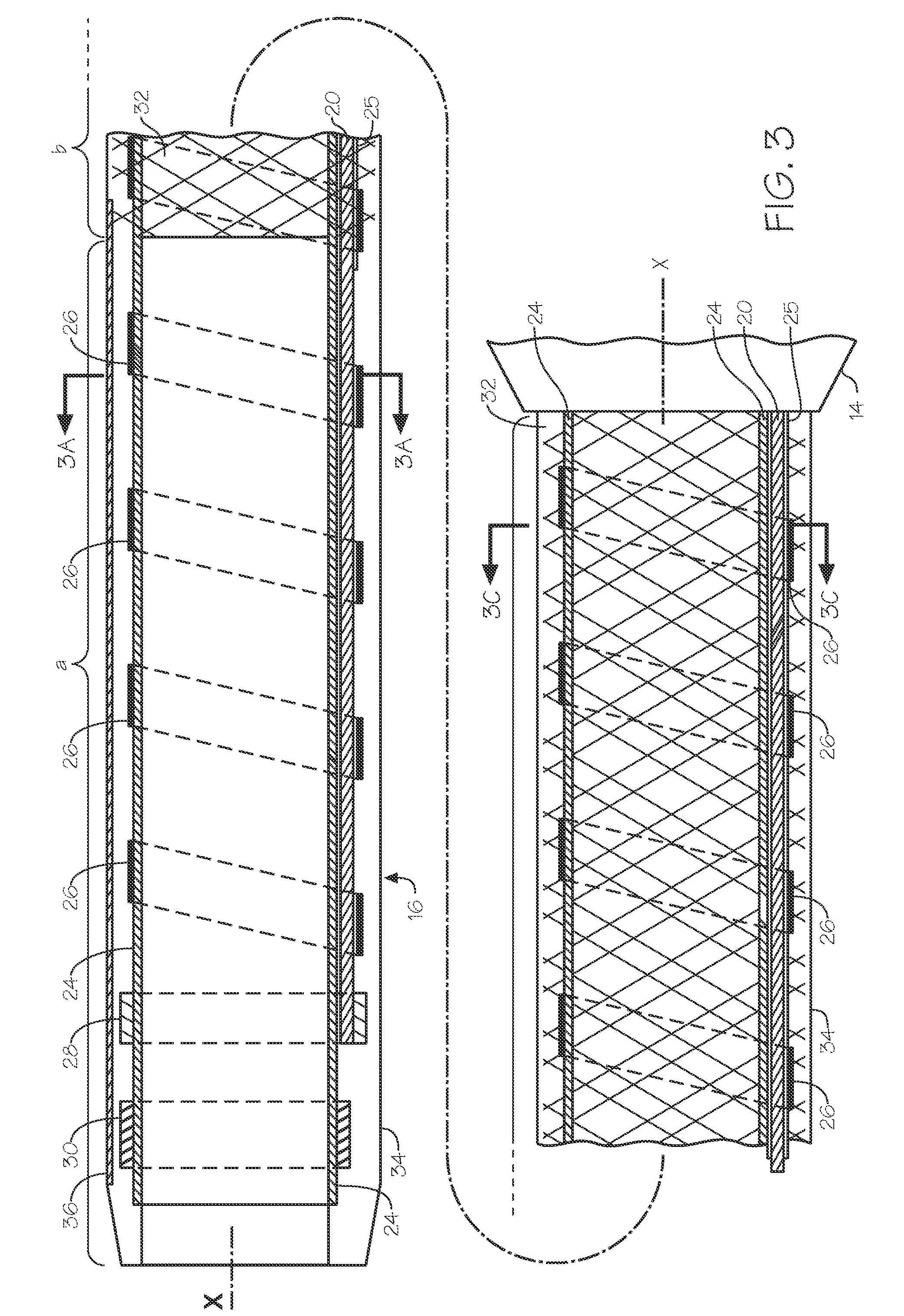Steerable endoluminal devices and methods
a technology of endoluminal devices and endoluminal tubes, which is applied in the direction of catheters, other medical devices, guide needles, etc., can solve the problems of increasing the risk of procedures, increasing the cost of products for each device, and taking more tim
- Summary
- Abstract
- Description
- Claims
- Application Information
AI Technical Summary
Benefits of technology
Problems solved by technology
Method used
Image
Examples
example 1
Radial and Brachial Access for Coronary, Neurological and Peripheral Procedures
[0087]Providing access from the arm has advantages in enabling patients to be discharged and mobile with only a bandage and no closure devices are necessary. In contrast, femoral access has higher costs associated with patient management as a closure device is often necessary and mobility of the patient is limited, resulting in the need of a gurney after a procedure which significantly delays discharge time of patient and thereby reduces the frequency and the number of patients treated.
[0088]Radial access for cardiac transendocardial delivery or left ventricular procedures:
[0089]A wire is inserted into the radial artery using a Seldinger technique. The steerable endoluminal device with dilator having an internal diameter of between 4 F and 5.5 F and an outer diameter of between 6 F and 7.5 F and having a lubricious coating on at least part of its distal length is inserted and advanced over a guide wire. A...
example 2
Trans-Atrial Septum Access
[0090]A steerable sheath with a long dilator is used for this application. A preferred embodiment of the invention suitable for this application comprises a steerable endoluminal device with an internal diameter of 6.5 F or 7.5 F or 8 F and an average wall thickness of less than 0.40 mm. The steerable sheath and dilator are advanced into the right atria from the femoral or brachial vein. The distal end of the sheath is deflected to point at the septum of the atrium and advanced until the dilator is situated against the septum causing the septum to tent. The deflection, advancement and placement of the dilator against the septum is observed and confirmed with the help of imaging technology such as echocardiography. After the dilator is confirmed to be in an acceptable position against the septum, a soft preformed flexible guide wire with a short sharp needle on the end is advanced through the dilator and into the left atrium. Alternatively, the guide wire is...
example 3
Shaped Renal and Mesenteric Access Sheaths
[0091]Catheter based treatment of renal artery disease is another application of the devices of the inventions. In particular, a 6 F steerable sheath embodiment of the invention comprises a long preformed gentle curve such that the deflection of the distal element results in the device having back up support from the distal aorta. Devices generally used for treatment of renal artery disease are the renal double curve catheters. See Vascular Medicine and Endovascular Interventions by Thom W Rooke (Google Books). The embodiment of the invention most suitable for such use would comprise a preformed curved region in a shape that is substantially similar to a first curve of a renal double curve catheter (RDC1) and a distal second curve formed by the deflectable portion with a length of about 3 cm to about 5 cm wherein the deflectable portion is deflected around a tight radius of curvature of about 1 cm towards the proximal end of the tubular memb...
PUM
 Login to View More
Login to View More Abstract
Description
Claims
Application Information
 Login to View More
Login to View More - R&D
- Intellectual Property
- Life Sciences
- Materials
- Tech Scout
- Unparalleled Data Quality
- Higher Quality Content
- 60% Fewer Hallucinations
Browse by: Latest US Patents, China's latest patents, Technical Efficacy Thesaurus, Application Domain, Technology Topic, Popular Technical Reports.
© 2025 PatSnap. All rights reserved.Legal|Privacy policy|Modern Slavery Act Transparency Statement|Sitemap|About US| Contact US: help@patsnap.com



